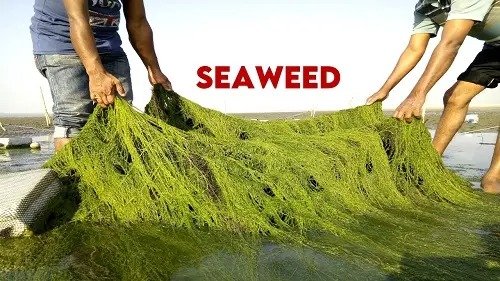Seaweed: a grievous arsenal to vanquish plant pathogens

Seaweed research efforts have been ventured over decennaries to track down manifold workable organic agricultural inputs that are propitious to humans and remain sustainable for the environment. With the onset of climate change, pesticide resistance and the continuous loss of land due to overgrowing populations, the need for artistic innovative agricultural practices is paramount more than ever. Biostimulants are a novel class of agro-inputs in the pool of innovations.
Biostimulants refer to substances of biological origin or microorganisms that, when applied to plants, are intended to stimulate natural processes in the plant that is responsible for efficient plant nutrient use efficiency and growth processes and/or an increase in the tolerance to abiotic and biotic stress. Seaweed extracts (SEs) are a kind of biostimulant extracted from seaweed that can promote crop growth, improve crop quality and enhance crop stress resistance.
Seaweed: a boon
Seaweeds are macroalgae that constitute an integral component of marine and coastal ecosystems. The marine macroalgae are abundantly available throughout the year along the coastal areas of India and different parts of the world. There are approximately 841 seaweeds are identified in the Indian coastal area.
Based on their pigmentation, they are divided into three classes,
- Phaeophyta (Brown)
- Rhodophyta (Red) and
- Chlorophyta (Green)
Seaweed extracts comprise a wide array of bioactive substances that elicit and directly promote plant growth and defense reactions. These substances in the extracts vary differently based on the class and species of seaweed as well as the type of extraction method utilized. Amongst different seaweeds, the most commonly cultivated and most effective is Phaeophyta, which produces comparatively large amounts of bioactive compounds.
Mechanism of action of SEs against plant pathogens
Seaweed extracts are considered a significant renewable resource for many bioactive natural products. This plays a very important role in plant disease management either directly or indirectly.
Direct mechanisms
Production of antimicrobial compounds
In a competitive and hostile environment, marine animals survive and live within complex communities and in close interaction with others. In response to ecological pressures such as competition for space, predation, and tide changes, they develop complex secondary metabolites.
Seaweeds produce a wide range of chemicals having pharmacological activities such as anticancer, antibacterial, antifungal, antiviral, anti-inflammatory, and others, and are potential sources of new therapeutic agents. Some antimicrobial compounds in seaweed-based extracts are polyphenols, polysaccharides, terpenes and pigments.
Elicitation of plant defense
Seaweed macroalgae are a rich source of bioactive compounds and have been widely employed in agriculture to activate plant defense against numerous diseases. The natural bioactive compounds produced by seaweeds act as elicitors of plant defensive responses i.e., systemic acquired resistance (SAR) or induced systemic resistance against many plant pathogens like fungi, bacteria, virus and also nematodes.
Indirect mechanisms
Seaweed for bio-encapsulation
Bio-Encapsulation involves the coating of biocontrol agents with layers of biopolymers like carbohydrates (sodium alginate, gellan gum, xanthan gum, chitosan, starch) proteins (gelatin, whey protein) and lipids. Seaweed-based biopolymers also play a major role in the development of encapsulation of different bioagents and also improve their efficacy as well as increase the shelf life of the formulation over a long time.
Seaweed-based green nanoparticles synthesis
In agriculture, nanotechnology can be used to conserve, produce, and protect crops and livestock by utilizing natural resources. Biosynthesis of nanoparticles (NPs) or green synthesis of NPs has recently gained popularity due to the biocompatibility, low toxicity, and environmentally friendly nature of the process and NP products. NPs can be used directly or as pesticide carriers for plant protection.
Microalgae are photoautotrophic microorganisms that contain secondary metabolites, pigments and proteins. These microorganisms can function as nano biofactories for the synthesis of metallic nanoparticles. In recent years, the synthesis of seaweed-based NPs, known as “phyconanotechnology”, has emerged as an emerging field with broad applications.
Commercially available seaweed products
Commercially seaweed products are available in both liquid, granule and powder formulations. Based on the purpose, there are two different kinds of products viz., biostimulants and defense activators. Biostimulants act as plant growth-promoting agents whereas defense activator stimulates the plant defense and help the plant to defend against different kinds of plant pathogens.
Conclusion
Seaweed extracts are emerging as commercial formulations to boost tolerance by targeting multiple stress pathways that could be used as a supplement in integrated disease management.
Article taken from – Times of Agriculture Magazine
Author- KAVYA, B. S.
Join Times of Agriculture
Get the latest Agriculture Magazine and regular important updates right on your phone.
👉 Join WhatsApp Group